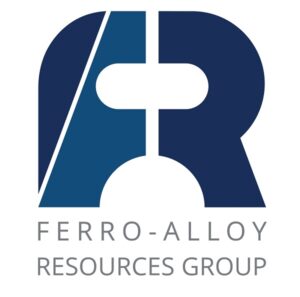Ferro-Alloy Resources Limited (LON:FAR), the vanadium mining and processing company with operations based in Southern Kazakhstan, has announced that, following the announcement earlier today (the “Launch Announcement”) regarding the launch of a proposed placing (the “Placing”) and direct subscriptions (the “Subscriptions”), the Company has raised gross proceeds of £8.2 million (approximately US$9.5 million) through the issue of an aggregate of 68,424,084 new ordinary shares of no par value (“Ordinary Shares”) in the capital of the Company at a price of 12.0 pence per Ordinary Share (the “Issue Price”). The Placing and Subscriptions were supported by both existing shareholders and new investors.
Earlier today the Company also announced the launch of a PrimaryBid Offer for up to £0.4 million (approximately $0.5 million) which is expected to close at 2.00 p.m. today. The Company will announce the results of the PrimaryBid Offer thereafter. In total the Placing, Subscriptions and PrimaryBid Offer (the “Fundraising”) will raise gross proceeds before expenses of £8.6 million (approximately US$10.0 million) for the Company.
The Placing was conducted through an accelerated bookbuild process (the “Bookbuild”) undertaken by Liberum Capital Limited (“Liberum”) and Shore Capital Stockbrokers Limited (“Shore”) acting as Joint Bookrunners (together the “Joint Bookrunners”).
Together the Placing and Subscriptions comprised of a Placing of 64,007,418 new Ordinary Shares (“Placing Shares”) to raise approximately £7.7 million (approximately US$8.9 million) and Subscriptions of 4,416,666 new Ordinary Shares (“Subscription Shares”) to raise approximately £0.5 million (approximately US$0.6 million).
The Issue Price represents a discount of approximately 17.9 per cent. to the closing price of 14.6 pence per Ordinary Share on 14 September 2022, being the last business day prior to the Launch Announcement.
Admission and Total Voting Rights
Application will be made to the FCA for the Placing Shares and Subscription Shares to be admitted to the standard listing segment of the Official List and to the London Stock Exchange for the Placing Shares and the Subscription Shares to be admitted to trading on its Main Market for listed securities (“Admission”). It is anticipated that Admission will become effective, and that dealings in the Placing Shares and the Subscription Shares will commence at or around 8.00 a.m. on 23 September 2022. The Placing Shares and the Subscription Shares will rank pari passu with the existing Ordinary Shares in issue. The Placing Shares and Subscription Shares will represent approximately 15.2 per cent. of the Company’s enlarged issued share capital in aggregate on Admission (assuming no other issuance of Ordinary Shares prior to Admission).
The Company will provide a further update with respect to the Total Voting Rights in issue following Admission after the completion of the Primary Bid Offer, the result of which is expected to be announced later today.
Related Party Transaction
Vision Blue Resources Limited (“VBR“), the Group’s strategic investor and substantial shareholder, as defined by the Listing Rules, has participated in the Placing by subscribing for 39,243,021 Ordinary Shares at the Issue Price. VBR is also a person closely associated with the Company’s Chairman, Sir Mick Davis. VBR has also committed to subscribe for additional new Ordinary Shares in the Placing if the PrimaryBid Offer is not fully subscribed such that the total amount raised by the PrimaryBid Offer together with VBR’s additional allocation in the Placing will total £0.4 million (approximately US$0.5 million).
Participation by VBR in the Placing constitutes a Related Party Transaction pursuant to the Disclosure, Guidance and Transparency Rules. The Independent Directors have considered the terms of the transaction and concluded they are fair and reasonable insofar as shareholders are concerned.
Confirmation of VBR’s resultant interest in the Ordinary Shares in the Company will be announced following the results of the PrimaryBid Offer later today.
The Company and VBR have now entered into the Deed of Variation which has varied the Investment Agreement as described in the Launch Announcement and the Company has executed the 2022 Convertible Loan Note Instrument and issued to VBR notes in the amount of US$4.2 million, to in effect extend the conversion date, details and the terms of which are set out in the Launch Announcement.
Director Participation in the Subscriptions
In addition to the participation by VBR, certain Directors of Ferro-Alloy Resources and others have now subscribed for a total of 4,416,666 Subscription Shares in aggregate. The beneficial holdings of the Directors before and after the Fundraising are set out below:
| Director | Existing beneficial shareholding | Fundraising Shares | Beneficial shareholding following the Fundraising | Shareholding as a percentage of the Enlarged Issued Share Capital |
| Nicholas Bridgen | 49,738,800 | 3,333,333 | 53,072,133 | 11.8% |
| Chris Thomas | 5,758,512 | 708,333 | 6,466,845 | 1.44% |


